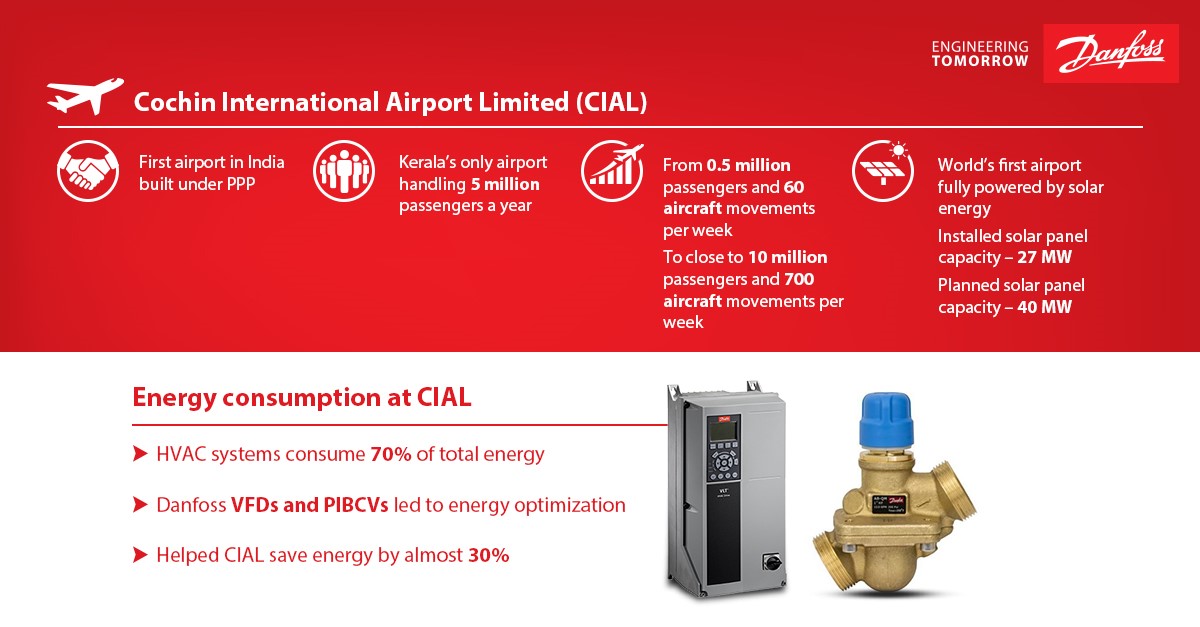Airports globally have evolved from just being docking stations for the flights to becoming an avenue that houses the best experiences a traveler can get. From retail stores to restaurants, from lounges to culture showcase centers, every new airport today is pushing the standard on experiences. But, delivering these uber experiences alongside a comfortable environment inside the airport expends a lot of energy. With close to 100 million passengers travelling through domestic routes every day in India[1] and with the number exponentially increasing, curating a comfortable experience for the guests can be a challenge.
In the burgeoning tourism industry in India, Kerala stands tall as the globally acclaimed God’s own country. Bringing together multiple facets of tourism under one roof viz. adventure, culture, medical, eco-tourism etc., Kerala is one of the more sought-after destinations, within India and globally too. Kerala witnessed around 15 Million tourists in 2017[2]. Adding to this influx and outflux of people are the many natives of Kerala who work abroad, thus paving the way for a better connectivity and a sophisticated airport. Amongst the international airports in India, the Cochin International airport is ranked 4 basis the number of passengers travelling. Since its inception, Cochin International airport has grown from having 0.5 million passengers and 60 aircraft movements per week to currently having close to 10 million passengers and 700 aircraft movements per week.

At Danfoss, we are engineering a better tomorrow through technologies that enable today’s airports to become energy efficient whilst delivering uber comfort to the passengers. At the Cochin International Airport, our Variable Frequency Drives (VFD) across chillers, cooling towers, pumps and Air Handling Units (AHU) have helped optimize the energy consumption and the Pressure Independent Balancing and Control Valves (PIBCV) have helped moderate the flow of chilled water basis the number of people in the airport. Together, the VFD and the PIBCV have helped the Cochin International Airport save energy by almost 30%.

Further, while the Cochin airport has been designed for a peak hour capacity of 2000 people per hour, the actual number of people keep varying every hour, making it difficult to ensure a consistent indoor climate. Danfoss’ Variable Frequency Drives (VFD) & Pressure Independent Balancing and Control Valves (PIBCV) help deliver a consistent indoor climate for the passengers at the Cochin Airport, every hour of the day through the year.

At Danfoss, we take pride in partnering with the Cochin International Airport in its eco-conscious endeavor towards creating an energy positive airport. It is also a matter of pride for Danfoss to be considered as a preferred partner for the Cochin International Airport from the perspective of future facing technology, uncompromising quality of the products and the after sales support that we have been able to extend.
Through our relentless focus on quality, reliability and innovation, Danfoss is engineering tomorrow’s India, today.
Reference Articles:-

Cochin International Airport Ltd - Case Story Video
Watch the video to know how CIAL benefited with a sizable percentage of energy savings.
